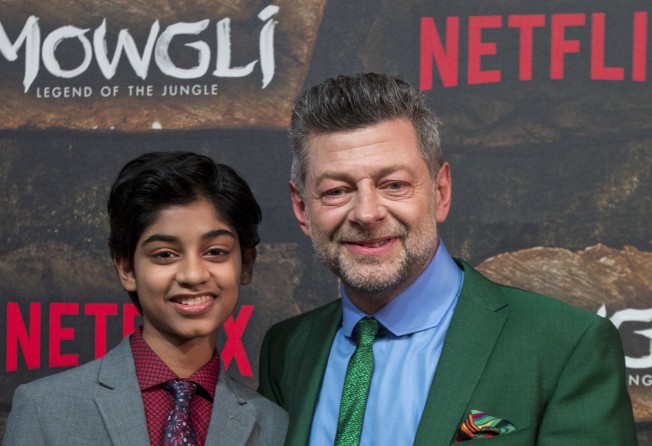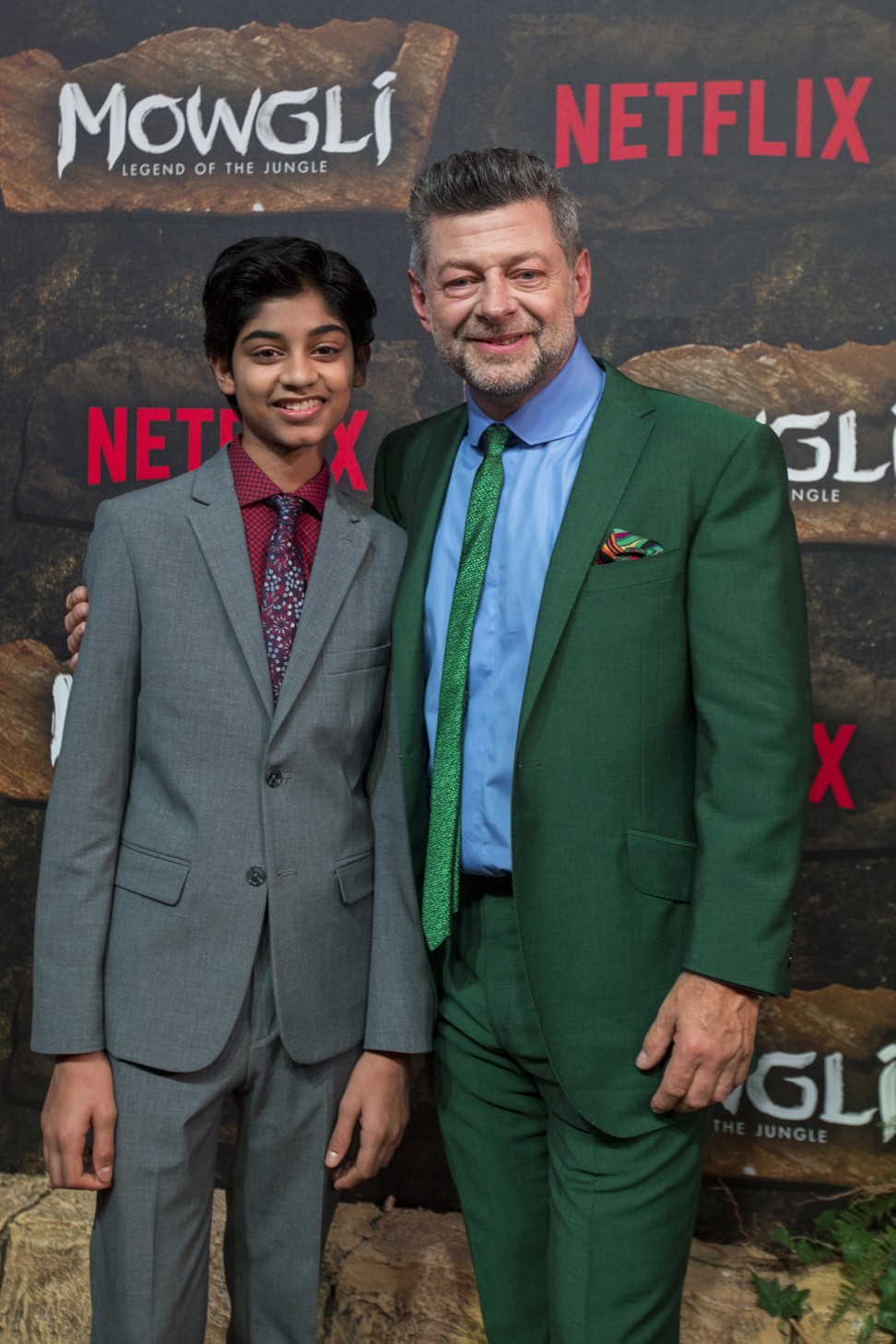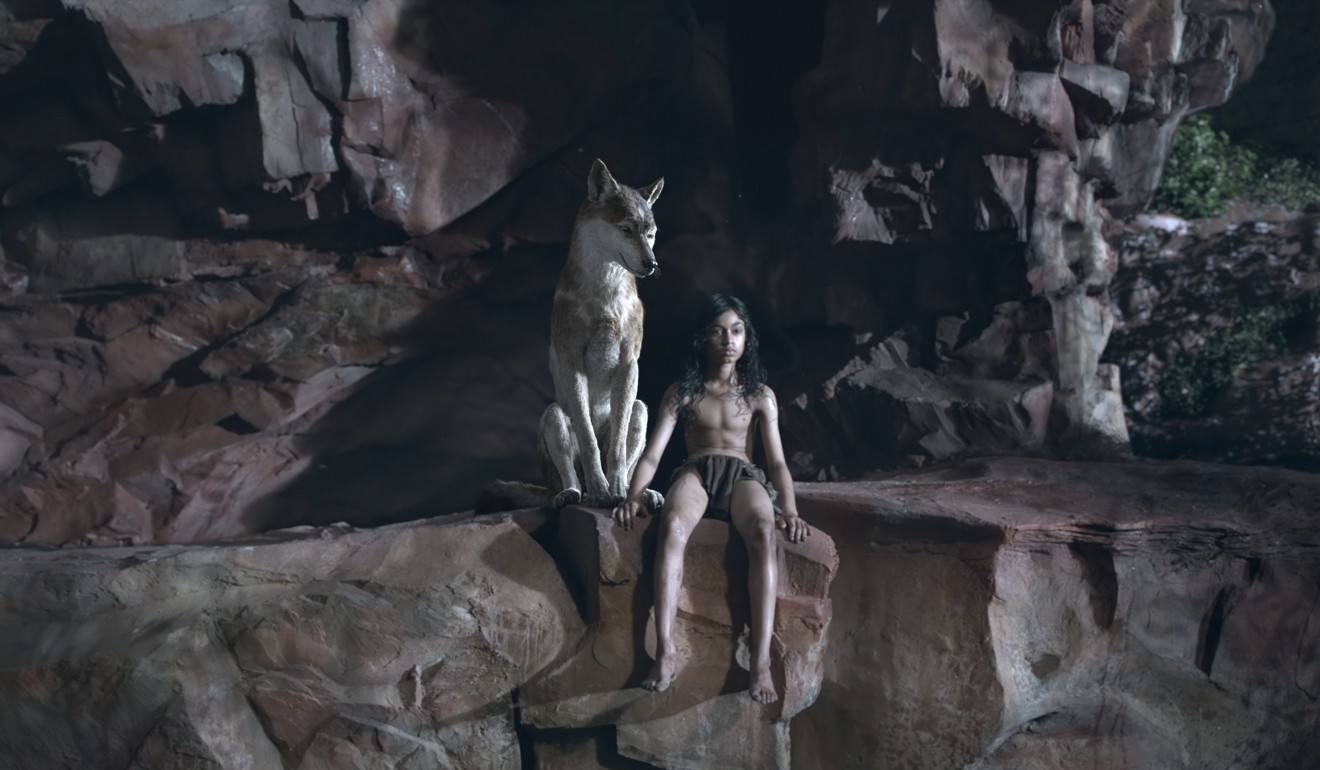Andy Serkis on Netflix film Mowgli, his darker take on The Jungle Book
- Serkis sees the classic Rudyard Kipling story as one of being an outsider
- The man who played Gollum and King Kong flips the tables and turns his star cast, from Christian Bale to Cate Blanchett, into jungle animals

Andy Serkis has had a lot of memorable film performances yet few seem to recognise the actor in person.
Outside the conference room in Singapore’s Marina Bay Sands convention centre, he sits on a solitary hallway chair checking messages and emails on his phone. Publicists and journalists are hurrying back and forth, oblivious that the man who played Gollum (The Lord of the Rings), King Kong (in Peter Jackson’s 2005 remake of the 1933 classic), the ape king Caesar (War of the Planet of the Apes) and Star Wars’ supreme leader Snoke (Star Wars: The Last Jedi) is in their presence.
Serkis – whose key on-screen roles all used a digital technology known as performance capture – doesn’t mind being an outlander though. He’s been one all his life. That strong connection with the displaced and alienated is what inspired his second film as director, Mowgli: Legend Of The Jungle, a Netflix original film that launched on Friday.
“I love the Jungle Book stories from Rudyard Kipling,” Serkis says during a recent Singapore promotion. “I’ve always had a fascination with the Mowgli character because he is an outsider. He is of two different cultures and my experience connects with that strongly. I was brought up with a Middle Eastern father and a mother from England. Many of the characters that I’ve played have examined the nature of the other. Mowgli is really the quintessential divided soul who is trying to find his own identity, so he spoke very closely to me.”
As the man who literally personified the potential of performance capture technology, Serkis the director was keen to put his cast into the same bodysuits with little balls attached so that they could flesh out the dramatic emotions of the Indian jungle’s animals and beasts.
In his darker and more historically attuned story, the anthropomorphic cast includes A-listers Christian Bale as Bagheera the panther, Cate Blanchett as Kaa the cobra, Naomie Harris as wolf mother Nisha, and Benedict Cumberbatch as Shere Khan the tiger.
Serkis himself is Baloo the bear.

“There’s five years of work on this film. I wanted to make a really emotional version of this story. We’ve seen many Jungle Books, but this story to me was very much about being an outsider, of belonging,” Serkis says.
“For Rudyard Kipling himself, Hindi was his first language. Then he was sent to England almost against his will, so he understood from a personal place what it means to be dislodged. That’s what the core of the story is. We live in a world full of travelling and being displaced. It’s a huge contemporary idea that I think bears examining.”
It might be the largest ever collection of performance-capture roles in one film but the centre of the story remains Mowgli – in this case, young actor Rohan Chand – as the wolf-raised boy who straddles the world of man and beasts.
“If you go back to the book, it is darker than most people’s perceptions,” Serkis says. “This is a young boy’s personal journey and it’s really emotional. It’s a rite of passage. It’s a boy brought up believing he’s part of a family, then at a certain age realising he is not and everything has always been a lie. He then has to assimilate himself into the world of man. It’s a huge role for a young actor. Rohan, who plays him, is absolutely extraordinary. You literally see him grow up.”

Serkis explains that when he first met the cast they were all interested in doing something new and outside their comfort zones.
“So we shot them all on a performance-capture stage with 360-degree cameras. They would ask me, ‘What was the secret to this?’ and I said, there is no secret. At the end of the day, it’s about character. All you have to do is believe yourself to be that character and the facial performance is captured by technology and cameras. You’re not restricted by the colour of your skin, your height or size, your shape or sex. This is why I’m so passionate about [performance capture]. It literally allows an actor to become anything.”
With Mowgli, I hope people will see it with fresh eyes and see a much more emotional story with real consequences and real danger
Serkis also gives the Kipling tale a greater cultural and historic context within South Asia.
“You can’t tell this story in our world now without acknowledging it’s all in India and that Rudyard Kipling was from India and he was a child of the British Empire and had a particular set of values,” he says. “You have to reinterpret those values and try to bring it to the movie. It very much deals with the notion of India and tribes and cultures clashing and colonialism to a certain extent. The Indian nature of it is crucial.”
Just as crucial is the storytelling technology he advocates so much. To digitally transform the actors into animal characters took two years and the film incorporates the most advanced performance-capture software and renderings ever seen in the industry.
“I am passionate about it because I do see it as one of the greatest 21st-century tools for an actor. It allows you to play anything, and inhabit any role,” Serkis says.
“The big change really was The Lord Of The Rings. Then, it was just called motion capture – literally capturing your physicality. The next big stage was facial capture in King Kong where there was a camera on your face to capture all the facial expressions. The next step was taking all of that equipment from a motion-capture studio to an outside location, which we did throughout the Planet of The Apes series. Those were the technological leaps.
“With Mowgli, I hope people will see it with fresh eyes and see a much more emotional story with real consequences and real danger. It’s a rite-of-passage story with a big arc.”